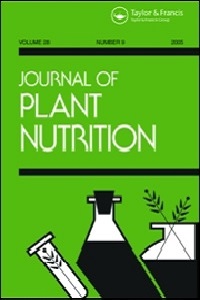Adaptive attributes of tropical forage species to acid soils. III. Differences in phosphorus acquisition and utilization as influenced by varying phosphorus supply and soil type
Low phosphorus (P) supply is a major limitation of forage production in acid soils of the tropics. A glasshouse experiment was conducted to determine the differences in P acquisition and utilization among three legumes (Arachis pintoi, Stylosanthes capitata and Centrosema acutifolium) and one grass (Brachiaria dictyoneura). The plants were grown under monoculture or in grass + legume associations in two acid Oxisols of contrasting texture (sandy loam or clay loam). The soils were amended with soluble phosphate at rates ranging from 0 to 50 kg‐ha‐1. After 80 days of growth, total P and nitrogen (N) content in different plant parts, inorganic P content and acid phosphatase activity in roots and leaves, vesicular‐arbuscular mycorrhizal root infection, total P acquisition from soil, P acquisition efficiency, P transport index, and P use efficiency were determined. Total P acquisition (per unit soil surface) of A. pintoi was higher than that of the other two legumes at 50 kg‐ha‐l of P supply. Phosphorus acquisition efficiency (mg of P uptake in shoot biomass per unit root weight) of the legumes in both soil types was several times higher than that of the grass at 50 kg‐ha‐1 of P supply. Acid phosphatase activity in roots of the grass decreased markedly as the supply of P increased in the soil, whereas enzyme activity was maintained in the legumes at 50 kg‐ha‐1 of P supply. Phosphorus use efficiency (g of forage produced per g of total P acquisition) of the grass in both soil types was markedly higher than that of the three legumes at all levels of P supply. This study highlighted the fact that inherent differences in efficiencies of P acquisition and utilization exist between tropical forage grass and legume species. These differences may play a major role in legume persistence in tropical pastures.

